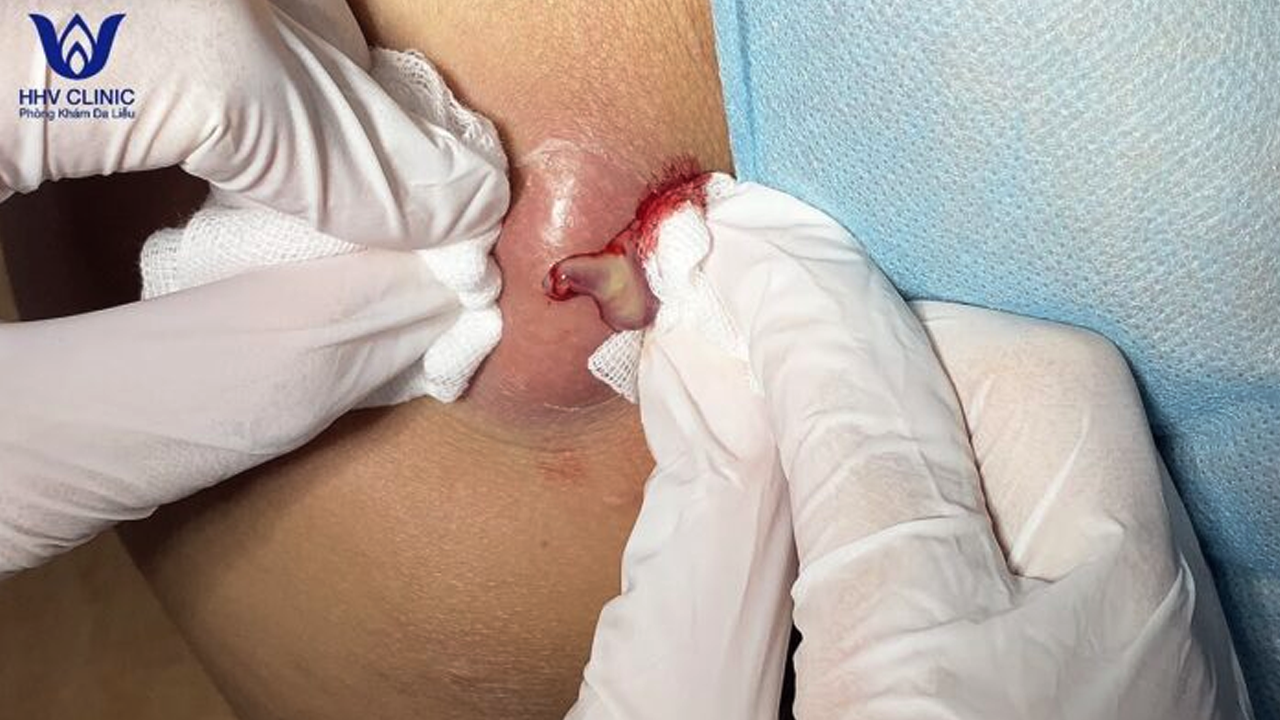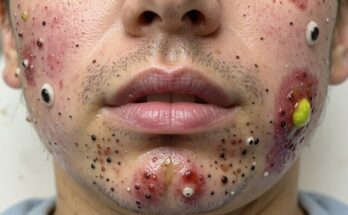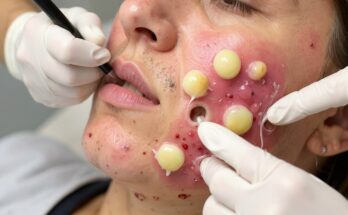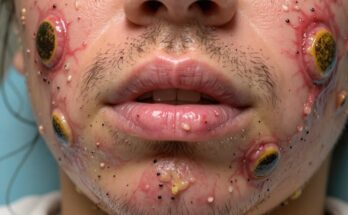Demystifying Cystic Acne: A Comprehensive Guide
Cystic acne, a severe form of acne vulgaris, is more than just a blemish; it’s a painful, inflamed eruption deep within the skin. Unlike milder forms of acne, cystic pimples manifest as large, red, and incredibly tender lumps. This deep-seated inflammation often results in scarring if left untreated, underscoring the importance of prompt and appropriate care.
Understanding the Root Causes of Cystic Acne
The development of cystic acne is a multi-faceted process stemming from a confluence of factors. Let’s delve into the key contributors:
1. Hormonal Imbalances: A Major Player
Fluctuations in hormones, particularly androgens, play a significant role. This is especially true during puberty, menstruation, and pregnancy. Conditions like Polycystic Ovary Syndrome (PCOS) can also significantly exacerbate hormonal influences leading to cystic acne breakouts. These hormonal shifts stimulate increased sebum production, the oily substance that lubricates the skin.
2. The Role of Sebum Overproduction
Overactive oil glands lead to excessive sebum production, a primary driver of pore blockage. This excess oil, combined with dead skin cells, creates the perfect environment for bacterial overgrowth.
3. Bacterial Infection: The Inflammatory Trigger
The bacterium Propionibacterium acnes thrives in clogged pores, triggering inflammation and infection, which manifests as those painful, deep cysts.
4. Genetics: An Inherited Predisposition
A family history of acne significantly increases your susceptibility to developing cystic acne. Genetic factors influence sebum production, pore size, and immune responses to acne-causing bacteria.
5. Lifestyle Factors: Stress, Diet, and More
While not the sole cause, lifestyle factors can significantly influence acne severity. High-glycemic foods, dairy consumption, and chronic stress are often associated with worsening acne symptoms. Improper skincare practices, including harsh scrubbing and picking at pimples, further exacerbate the problem.
Effective Treatment Strategies for Cystic Acne
Addressing cystic acne requires a multi-pronged approach combining preventative measures with targeted treatments.
1. The Absolute No-No: Avoid Picking and Squeezing
Resist the urge! Picking or squeezing inflamed cysts only worsens inflammation, spreads bacteria, and dramatically increases the risk of permanent scarring. Patience and professional help are key.
2. Gentle Cleansing: The Foundation of Care
Twice-daily cleansing with a mild, non-comedogenic (non-pore-clogging) cleanser is essential. Look for cleansers containing salicylic acid to help gently exfoliate and unclog pores.
3. Topical Powerhouses: Medications for Targeted Action
Several topical treatments effectively combat cystic acne:
- Benzoyl peroxide: A powerful antibacterial agent that reduces bacteria and inflammation.
- Salicylic acid: Exfoliates the skin, removing dead skin cells and preventing pore blockage.
- Topical retinoids (Adapalene, Tretinoin): These promote cell turnover, preventing new cysts from forming. Note that these can cause initial irritation.
4. Oral Medications: For Severe Cases
For moderate to severe cystic acne, a dermatologist might prescribe oral medications:
- Oral antibiotics: To fight bacterial infection and reduce inflammation.
- Oral contraceptives: To regulate hormones, particularly beneficial for women.
- Isotretinoin (Accutane): A powerful medication reserved for severe cases, requiring strict dermatologist supervision due to potential side effects.
5. Cortisone Injections: Rapid Relief
Dermatologists can inject corticosteroids directly into cysts to quickly reduce inflammation and pain, providing immediate relief.
6. Home Remedies: Gentle Support
While not a standalone solution, applying ice wrapped in a cloth can reduce swelling and pain. Spot treatments with sulfur or tea tree oil offer mild anti-inflammatory benefits. However, use these with caution and always perform a patch test first.
Preventing Future Breakouts: Proactive Skincare
Prevention is paramount. Adopting a consistent skincare routine that includes:
- Oil-free, non-comedogenic products: To avoid further clogging pores.
- Gentle cleansing and exfoliation: To remove dead skin cells without irritation.
- Broad-spectrum sunscreen: To protect healing skin from sun damage.
- Stress management techniques: To minimize stress-related acne flare-ups.
- A balanced diet: Minimizing high-glycemic foods and dairy may help.
When to Seek Professional Help
If home treatments fail to improve your cystic acne or if your condition worsens, scheduling an appointment with a dermatologist is crucial. They can provide a proper diagnosis, recommend tailored treatment plans, and perform procedures like chemical peels or laser therapy to minimize scarring and manage severe acne effectively. Remember, seeking professional help early can significantly improve your outcome and prevent long-term scarring.



